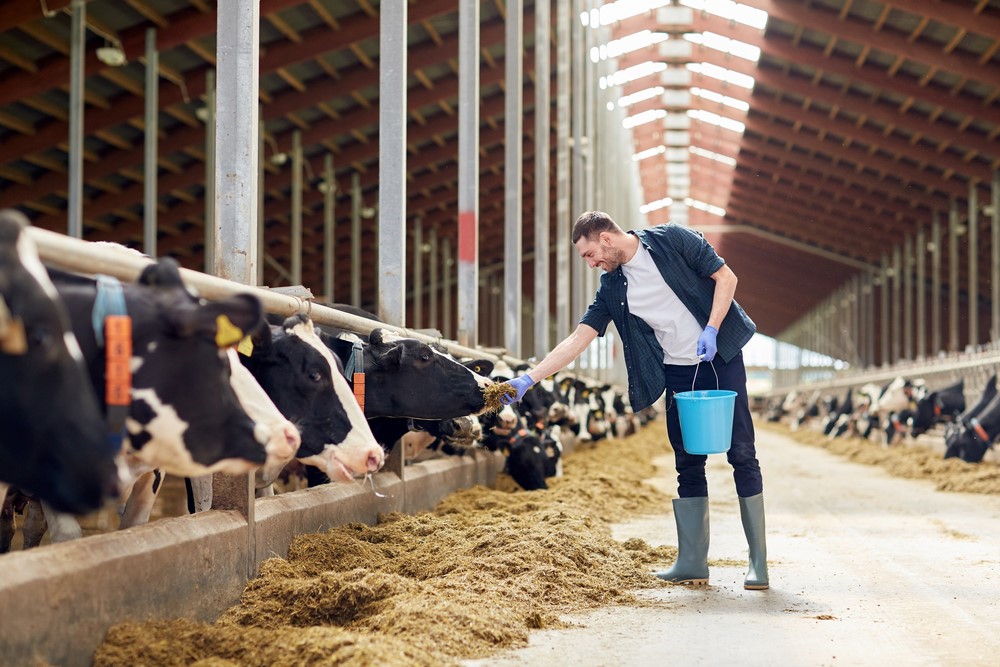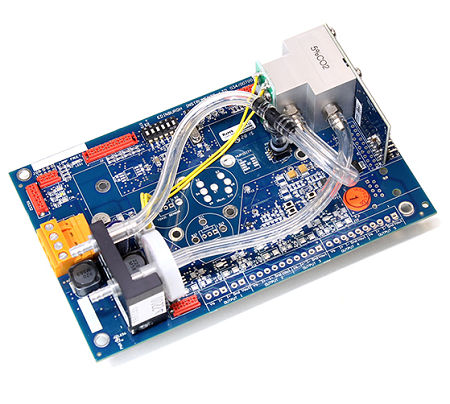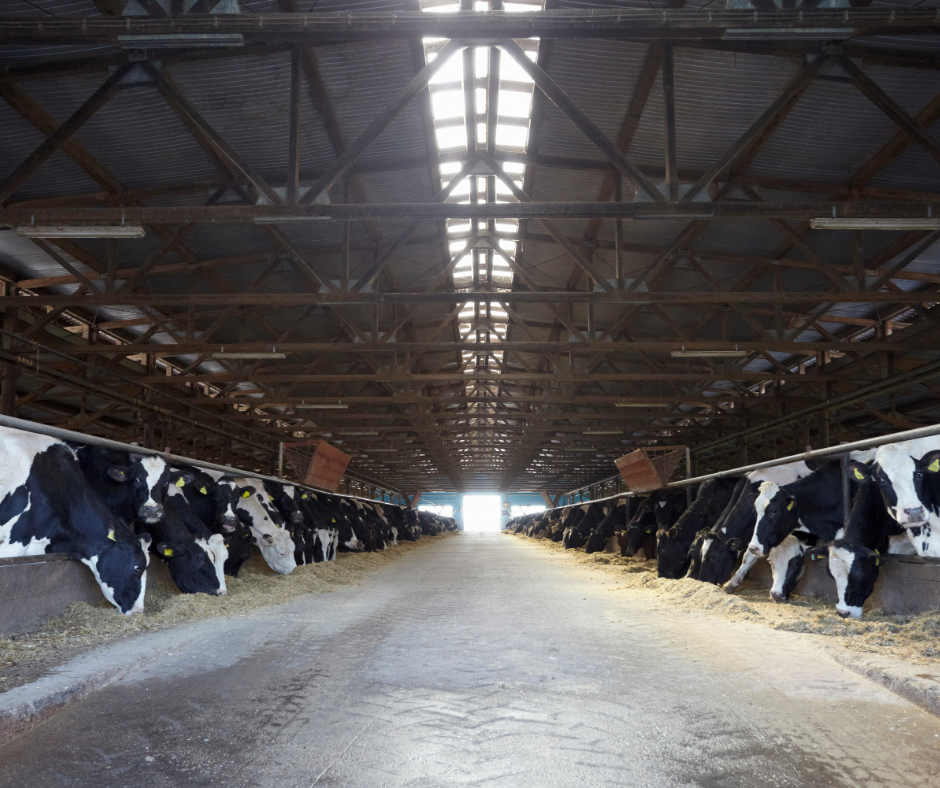Recently, there has been growing interest in how reducing our individual meat consumption could have a positive impact on greenhouse gas emissions.1 Each day, a single cow can produce as much as 250 – 500 L of methane gas.2
As well as the volume of methane produced being problematic, methane also has a greater warming effect than other greenhouse gases such as carbon dioxide due to methane being a much more efficient and effective heat trap, making its environmental impact even more problematic.
However, global meat production is still rising2 and, while consumers may have turned away from cattle towards other meat sources, beef exports from the US alone were worth 7.3 billion dollars in 2018.3 All aspects of agriculture, from livestock farming to crop growth, play a key role in the economy and health of many communities. So, given that overall food demands with a growing world population will most likely continue to rise, there is a great interest in the industry for finding ways to reduce its environmental footprint.4

Image Credit: Syda Productions/Shutterstock.com
As well as methane production from animal rearing, other sources of greenhouse gas emissions in agriculture include emissions from soils disturbed during land use5, the use of farm machinery and fertilizer.6 Overall, this means agriculture is responsible for a quarter of global greenhouse gas emissions.7
A Smaller Footprint
There are a number of different approaches that can be used to minimize the greenhouse gas emissions from agriculture, however, all of these rely on being able to measure and understand current emission levels as well as monitoring changes. Typically, this is done through the use of gas sensors with online analysis capabilities that can be used to record and log methane, carbon dioxide, or other hydrocarbon gas levels.
Historically, monitoring methane emissions from livestock has been done via indirect calorimetry respiration chambers. However, these involve significant investment in capital equipment, can only be used with small numbers of animals, and involve the intentional confinement of animals which may alter their behavior or stress levels, and subsequently mean the emissions readings are non-representative.8,9
A much more unobtrusive way to make such measurements is to install remote gas sensors into areas such as milking pens or barns that can continually monitor emission levels without perturbing the animals’ routine. Such sensors are powerful research tools as there is currently a great deal of research effort towards finding ways to reduce methane production from ruminant species, such as cows, by changing their digestive process. This can be through changing the composition of the animals’ diets10 or by the addition of chemicals to the food that can act as methane inhibitors, reducing the overall levels of methane generation from the digestive process.11
Given the size of animal storage areas and the ‘active’ nature of a farm, with animals entering and leaving the building regularly, a suitable gas sensor needs to be highly sensitive to detect even the smallest variations in the concentration of the gas of interest and capable of rapid response times so logging can be performed at very regular intervals in a rapidly changing environment.
For this purpose, non-dispersive infra-red (NDIR) sensors are ideal as the strong infrared absorption properties of many greenhouse gases, including methane and carbon dioxide, means they can be detected in very small quantities. Such sensors can be used for online analysis, without the need for the collection of batch samples to be analysed offline which also reduces the overall labor costs associated with gas monitoring.
Edinburgh Sensors
Edinburgh Sensors have extensive expertise spanning over thirty years in NDIR gas sensor development. Their products cover numerous applications for methane, carbon dioxide, and other hydrocarbon gas sensing, and have already proven to work well for sensing methane production from cattle.12
One product offered by Edinburgh Sensors that is ideal for installation into livestock handling areas for gas monitoring is the GasCard NG.13 It can be used as an adjunct for any automatic gas detection system and offers excellent sensitivity and concentration range of concentrations of 0 – 100 % for detection (for both methane and carbon dioxide).
The GasCard NG has been designed with robust, reliable measurements in mind. The device offers a zero stability of ±2% of range (over 12 months) with an excellent ±2% accuracy and for farm environments with challenging and fluctuating environmental conditions, the readouts are also temperature, pressure (800 – 1150 mbar range), and humidity compensated and will remain accurate over 0 – 95 % humidity conditions. All of these corrections are performed onboard in real-time, so data readouts are of already corrected and the most accurate data possible.

The patented dual-wavelength NDIR source is field-serviceable and the overall device has an operating voltage of 7 – 30 V. For integration into data logging systems or with other devices, options include true on-board R232 communications or TCP/IP communications protocols. Together, all of this makes for a low-fuss, reliable, and accurate gas monitor that is ideal for use in farm environments to provide crucial information that can be used to find effective strategies for reducing greenhouse gas emissions.
References
- Green, R., Milner, J., Dangour, A. D., Haines, A., Chalabi, Z., Markandya, A., … Wilkinson, P. (2015). The potential to reduce greenhouse gas emissions in the UK through healthy and realistic dietary change. Climatic Change, 129(1–2), 253–265. https://doi.org/10.1007/s10584-015-1329-y
- Meat Production, Hannah Ritchie and Max Rosser, (2019), https://ourworldindata.org/meat-production, accessed 12th October 2020
- Food and Agriculture Organization of the United Nations Data (2020), http://www.fao.org/faostat/en/#data, accessed 12th October 2020
- The Role of Livestock in Economic Development and Poverty Reduction, Martin Upton, (2004), https://assets.publishing.service.gov.uk/media/57a08cac40f0b6497400136c/PPLPIwp10.pdf
- Oertel, C., Matschullat, J., Zurba, K., Zimmermann, F., & Erasmi, S. (2016). Greenhouse gas emissions from soils—A review. Chemie Der Erde, 76(3), 327–352. https://doi.org/10.1016/j.chemer.2016.04.002
- Stuart, D., Schewe, R. L., & McDermott, M. (2014). Reducing nitrogen fertilizer application as a climate change mitigation strategy: Understanding farmer decision-making and potential barriers to change in the US. Land Use Policy, 36, 210–218. https://doi.org/10.1016/j.landusepol.2013.08.011
- Our World in Data, Hannah Richie (2020) https://ourworldindata.org/food-ghg-emissions, accessed 13th October 2020
- Gold – Difford, G. F., Olijhoek, D. W., Hellwing, A. L. F., Lund, P., Bjerring, M. A., de Haas, Y., … Løvendahl, P. (2018). Ranking cows’ methane emissions under commercial conditions with sniffers versus respiration chambers. Acta Agriculturae Scandinavica A: Animal Sciences, 68(1), 25–32. https://doi.org/10.1080/09064702.2019.1572784
- Grainger, C., Clarke, T., McGinn, S. M., Auldist, M. J., Beauchemin, K. A, Hannah, M. C., Waghorn, G. C., et al. (2007). Methane emissions from dairy cows measured using the sulfur hexafluoride (SF6) tracer and chamber techniques. Journal of Dairy Science 90(6), 2755–2766.
- Hulshof, R. B. A., Berndt, A., Gerrits, W. J. J., Zijderveld, S. M. Van, Newbold, J. R., & Perdok, H. B. (2012). Dietary nitrate supplementation reduces methane emission in beef cattle fed. Journal of Animal Science, 90(7), 2317–2323. https://doi.org/10.2527/jas2011-4209
- Hristov, A. N., Oh, J., Giallongo, F., Frederick, T. W., Harper, M. T., Weeks, H. L., … Kindermann, M. (2015). An inhibitor persistently decreased enteric methane emission from dairy cows with no negative effect on milk production. PNAS, 112(34), 10663–10668. https://doi.org/10.1073/pnas.1504124112
- Rey, J., Atxaerandio, R., Ruiz, R., Ugarte, E., González-Recio, O., Garcia-Rodriguez, A., & Goiri, I. (2019). Comparison between non-invasive methane measurement techniques in cattle. Animals, 9(8), 1–9. https://doi.org/10.3390/ani9080563
- Gascard NG (2020), https://edinburghsensors.com/products/oem-co2-sensor/gascard-ng/, accessed 10th October 2020

